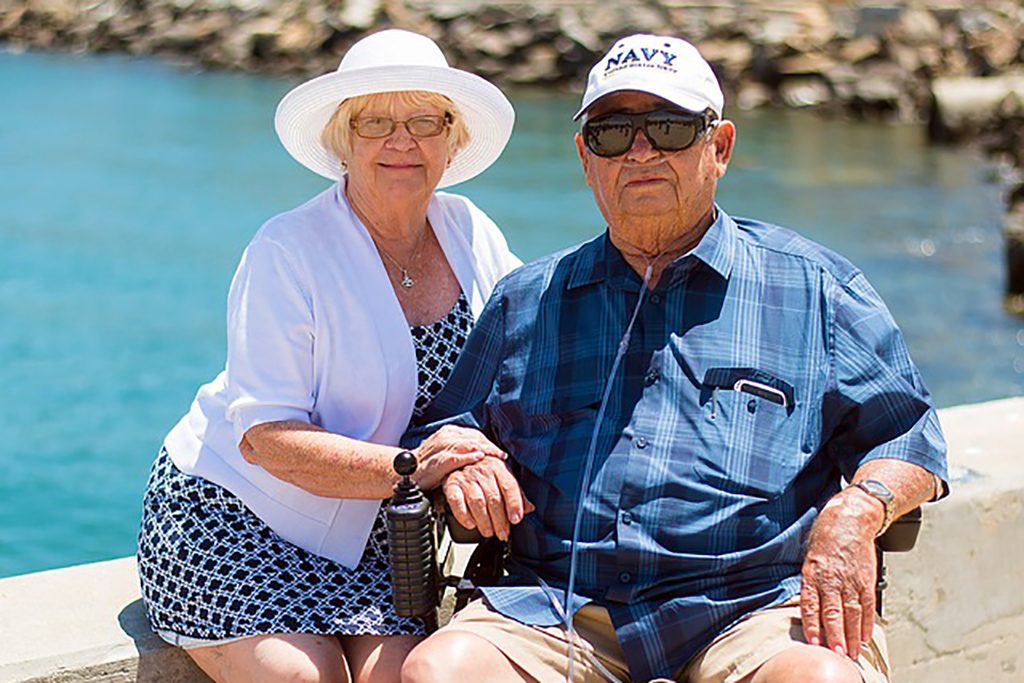Home-Based Services
Many families prefer respite where care is provided in the home, where the care recipient is most comfortable, and the home is best equipped for any special needs. Whether that care is provided by an individual respite worker hired by the family or provided by an agency that recruits their own workers, the care provided at home allows a caregiver time to get out of the home to pursue personal interests, or to rest & relax at home wherever they can arrange to have uninterrupted personal time to themselves. Ideally, respite services in the home could be arranged any time during a 24-hour day, 365 days per year.
Sitter-Companion Services
This is the simplest arrangement for respite. Someone to visit, entertain, and supervise a care recipient while the caregiver is away or occupied in another activity. Someone with whom to go see a movie with, go out for a meal, take a walk with, or engage in a shared activity or interest. Friends and family may provide this type of respite, paid or unpaid. This may be particularly attractive to care recipients who want to be independent, or who prefer to be with people their own age.
Consumer-Directed Respite
The person providing respite care is identified or selected by the family, probably trained by the families themselves. Typically, this is offered through a voucher program that allows family caregivers to locate, hire, train and pay their own respite workers. This type of respite may be available in-home or out-of-home.
Family Care Homes/Host Home Model
Respite is offered in a provider’s home. While this could be a family day care home, a trained volunteer’s family home or a foster family home, the home-like setting would be more familiar and comfortable to the care recipient. Many of these homes are licensed under state regulations for foster homes or group homes.
Respite Center-Based Model
This out-of-home respite model uses existing space to provide respite. It may be a day care center, church, community center, school or other setting. Respite centers offer regular daily or intermittent respite programming (e.g. after school hours or one weekend day per month). These programs employ trained staff and/or volunteers.
Respite in Foster or Group Homes
Children, Adolescents, and/or Adults with disabilities are placed outside of their family homes and live together in a home-like environment with trained, rotating 24 hour staff. Utilizing existing space/vacancies in the group home for respite provides care recipients with a semi-independent living experience. Group homes for older individuals may also provide respite services. These foster or group homes are regulated and licensed by the state, often managed by a non-profit or for-profit corporation. Respite in these settings may be available infrequently and may fulfill emergency needs as a priority to other requests.
Residential Facilities
Some long-term residential facilities have a specified number of “beds” set aside for short-term respite. These can extend to community residences, such as group homes or supervised apartments, but most often are nursing homes and other state-run facilities. Increasingly, assisted living programs or nursing homes for older population offer respite for overnight, weekend or extended stays.
Cooperative Model
Cooperatives and time-banks have developed in a few communities, especially in communities where services are limited. In an informal association, parent and family caregivers “trade” services with each other. This exchange allows families to schedule respite dates, and fees are usually not assessed. It works well for families whose children or other family members have similar disabilities. These are usually funded and supported through a non-profit or for-profit entity.
Respitality Model
Developed by United Cerebral Palsy of America, respite is created through a partnership between private sector entities, participating hotels, and respite agencies. Through Respitality, caregivers typically get a hotel room, dining, and entertainment while a local respite program provides respite care in the family’s home or an out-of-home setting. This is usually a special one-time event for a caregiver and is not available in many communities.
Hospital-Based Respite
Due to the special needs of children and adults with high care needs, hospitals are often the only source of high-quality care with medical support available 24 hours a day/365 days a year. Small community hospitals with beds available or low weekend occupancy may provide care that provides parents and caregivers a sense of security during respite. Crisis care nurseries may be available in larger communities for high need patients, or pediatric support for medically fragile children. The Veterans (VA) Medical Centers may also offer respite for eligible veterans.
Camps & Clubs
Many places around the country offer camps (either integrated or adaptive) for day or overnight experiences for children and adults with disabilities, chronic or terminal illnesses. Camps can be a positive experience for the camper, as well as a respite break for parents and caregivers. Vacations clubs or groups, activity-based outings, vocal or dance clubs that serve adults with disabilities may also offer families a respite experience. Participants are often matched or grouped with a “buddy” to assist them during the activity. These programs typically schedule events & activities throughout the year and are staffed with paid and volunteer workers. More activity-based respite programs are developing for older adults with cognitive and/or physically impairments.
Adult Day Care Centers
Also known as Adult Day Services, these centers provide a break for the caregiver while also providing health, therapeutic, or social activities for adults with disabilities and/or chronic health care conditions, such as Alzheimer’s, that increase their care needs. Some centers limit their services to a dementia-specific population while others serve a broader population. Generally, these programs offer respite from several hours a day to a full day (six -eight hours) during the week. Most do not offer weekend or overnight services.
Emergency Respite Care
The placement of an in- home respite care worker during an unplanned or planned event, or the temporary placement of the care recipient outside the home, to substitute for the caregiver. Emergency respite care may be provided on one or more occasions.
An emergency is an unplanned event that results in the unavoidable absence of the primary caregiver or back up caregiver from the home. Unplanned events threaten the health and safety of the care recipient or the caregiver (which thereby places the care recipient in danger.)
Emergency respite programs offer funding and/or resources to support caregivers of children & adults with special needs. It is only provided when caregivers have an urgent need for respite but supports a caregiver’s decision to determine where care will be delivered and by whom through advance planning. Without advance planning, a request for emergency respite may be expedited through an agency response protocol but decisions on how respite is delivered will be made by others. All types of respite programming can be used in an emergency.
Services may cover some or all of the following circumstances:
- Caregiver illness (physical, mental or emotional)
- Caregiver hospitalization or Doctor’s appointment
- Illness of a loved one
- Funeral/Wake
- Reduction of stress level
- Drug/Alcohol abuse counseling/support
- Care recipient transitions (living arrangements)
- Loss of employment/Work-related situations



